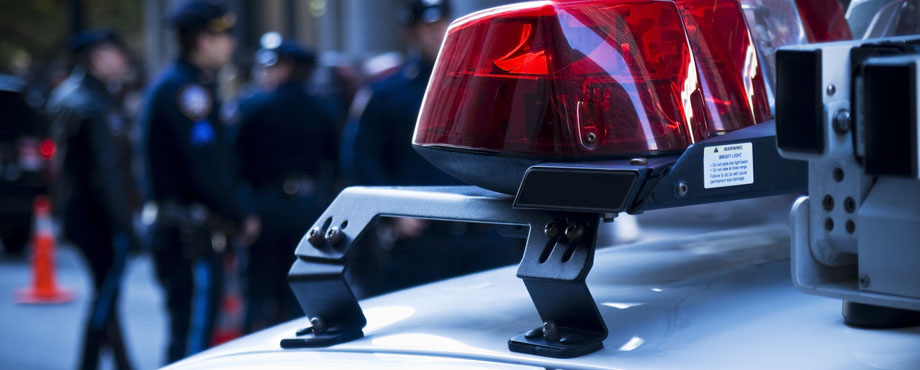
It is difficult to capture a movement or even a moment while you’re standing in the center of it.
But co-directors Sabaah Folayan and Damon Davis were able to do just that with their stunningly powerful documentary, Whose Streets?
Opening with an 1856 ruling by the United States Supreme Court that denied slaves basic human rights, Whose Streets? advances to 2014 with the tweet that announced 18-year old Micheal Brown Jr.’s death to the world. In the city of Ferguson, Missouri, on Aug. 9, 2014, Brown was shot multiple times by a white police officer. His death and the lack of accountability from the city’s police force started an uprising that would send shock waves around the nation.
Whose Streets? tells the story of the activists and leaders on the ground in Ferguson, who are often shunned or cast aside for more “popular” figures or white talking heads that dominate the news cycle. It’s a visceral film about the Black Lives Matter movement, police brutality and the painful way the media and government continues to abuse those who are fighting for their lives. Ahead of the film’s debut, JETmag.com spoke with Folayan and Davis about why this film needed to be made and what they hope for in the future.
JETmag.com: Was it your intent to make a film to highlight what you saw in Ferguson on the eve of Mike Brown’s death?
Damon Davis: I was already there. I’m from East St. Louis, Illinois, and I’m in the St. Louis area. I went out there just to be a part of what was already going on. As things progressed, I saw specifically how the media was portraying what was going on. Sabaah and Lucas [Alvarado Farrar] and everyone else came in with genuine intentions. That inclination brought us together because they wanted to do the same thing.
Sabaah Folayan: I was in New York when Mike Brown was killed, and I went to Ferguson about a month after everything happened. At first, I was trying to do more of a written study from a public health approach to say that people and police facing off every day is going to have a long-term traumatic effect on the community. About two weeks into trying to do that, my DP and I, who was a friend of mine from college realized that this medium wasn’t gonna be able to capture the full story. That’s when we started filming and asking questions and soon after that, we connected with Damon.
JETmag.com: Did you find difficulty as an outsider to get people to discuss their experiences in the community?
SF: I found that people were surprisingly receptive. I think that very few media people had actually taken the time to ask those types of questions and to come back day after day, night after night. I was able to make some strong relationships, and I was lucky enough to have a lot of people open up to me and talk on camera about what was going on, I think once David [Whitt] joined our team, it really just solidified our relationship with that community. It gave people a sense that we were there for the long haul and that we were gonna be accountable to them and this story.
JETmag.com: Queer Black women started the Black Lives Matter Movement, but they are often erased. Was it a conscious effort on the part of both of you to center Brittany Farrell and Alexis Templeton’s story at the core of this film?
SF: We definitely think it’s important to center Black women, but the reality of the situation was that Brittany and Alexis were galvanizing a lot of energy and laying a lot on the line for this movement. We really wanted to tell a story about the community; we were not trying to make any one person look like a monolithic leader or a messiah figure. These are people who had a lot of really deep accesses to their life, and their story really exemplifies what a lot of people were going through.
DD: I think that perfectly sums it up. We went out to tell the story of the community, the community asked us to organize it, and the people you see the most, the people that opened up most to it were so responsive to us, and also the people that we galvanized. We just wanted to tell the story from the point of view of the people that were out there putting work in, and also the people that you see in the town.
JETmag.com: There are so many incredible moments in the film, from the arrests to the Black female police officer who began weeping as she held the line with her comrades. How did you decide which parts of the story you wanted to keep in the film?
DD: That was a huge part of the editing process. [It was] gonna be a lot of math to put this together. That’s what it turned out to be. We had things in there, we took them out, we put them back in, we moved them around; it was just a really organic process, but we did have a hard time with a few things we parted with.
JETmag.com: Did you have a particular narrative that you wanted to stick to?
SF: We really just wanted to stick as close as possible to some of the experience of being out there on the ground and honoring what people in St. Louis lived through. There’s always a crest of temptation to look at the nation with its problems and look at the way this is affecting all of our communities. Ultimately, we felt like the story would be stronger if we could stay really really specific.
JETmag.com: It has been three years since Mike Brown’s death. Do you think we are closer to any solutions surrounding police brutality?
SF: It’s easy to get caught up in the national conversation about politics and what’s going on in the White House and to forget that there are things that we have control over in our own backyard. It would be a mistake to try to measure everyone’s progress based on this particular administration. I think people are continuing to do quiet work in their local communities and I think that’s really where our strength is gonna be.
JETmag.com: Has there been any talk about using Whose Streets? as a tool in the classroom?
DD: Yes. From the very beginning, Sabaah and I were talking about making a handbook for organizers. We also think that if you create any great tool, when people see it, they’ll have way better ideas about how this thing will be impactful in the classroom.
JETmag.com: What’s next for the two of you moving forward?
SF: I’m definitely gonna continue my stories. I’m developing a couple of narrative projects as well as a non-fiction work. I have a lot of stuff still in development.
DD: I’m also working on a few narrative projects as well as another feature doc that I’ve been picking at for awhile. I’m also working on my visual art and music.
Whose Streets? premieres Aug. 11.



